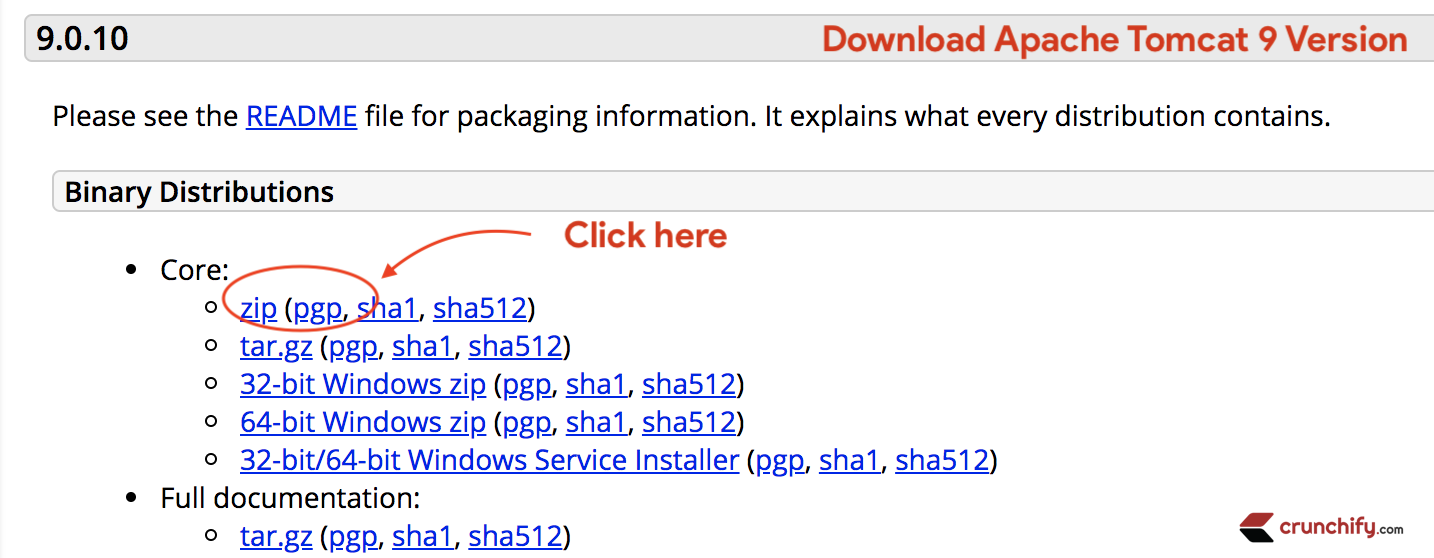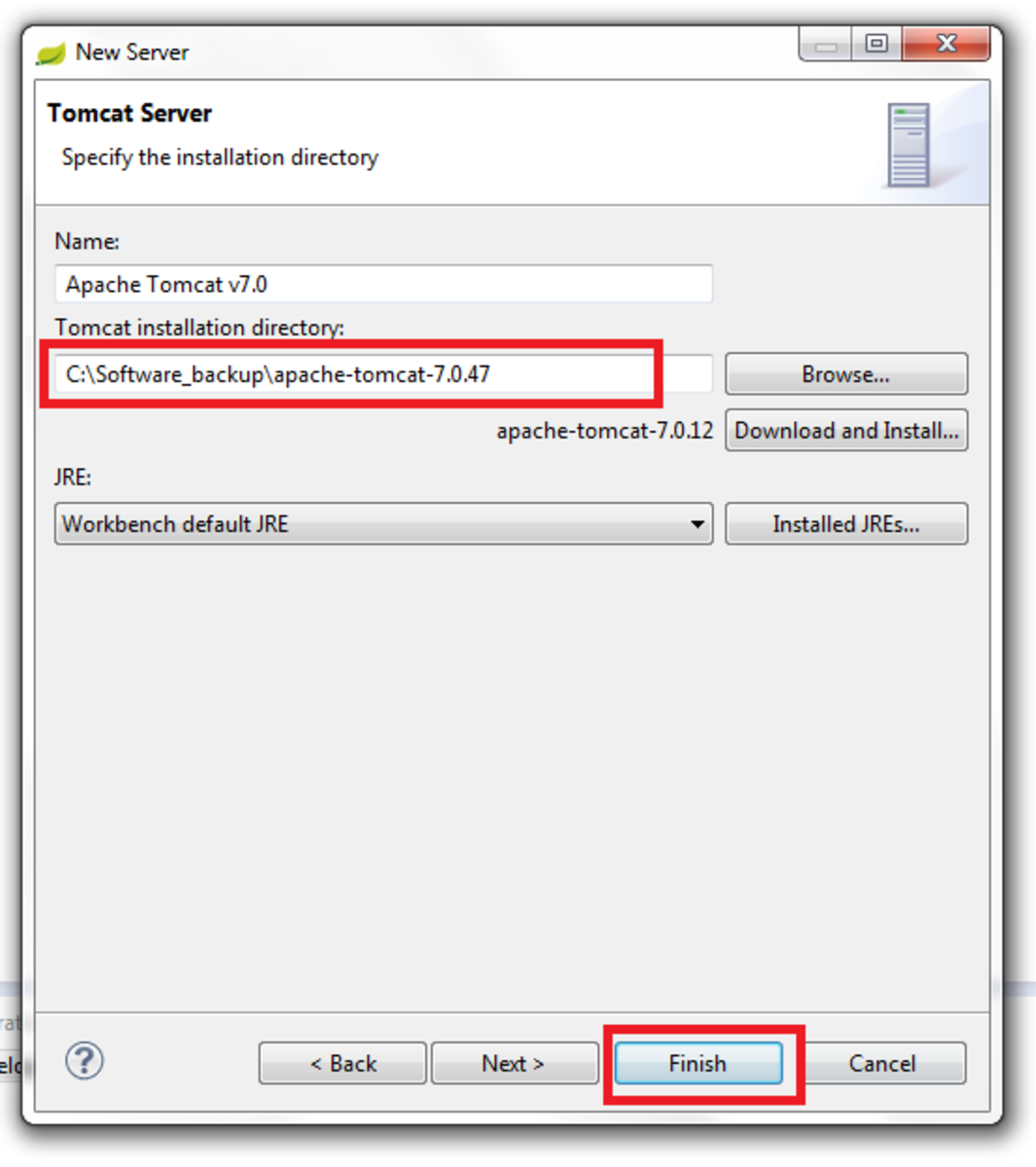I’ve made the switch over to Apple on my development machines and as I’m starting my new company soon I’ve got myself a new MacBook Pro machine of which I will be transporting to and from the office so I’ve been installing my entire development on it and thought I’d blog about how to set-up Tomcat 7 on MacOSX to use as a development environment… It’s rather straight forward but thought I’d post it up anyway to help others!

This signature should be matched against the KEYS file which contains the OpenPGP keys of Tomcat's Release Managers. We also provide SHA-512 checksums for every release file. After you download the file, you should calculate a checksum for your download, and make sure it is the same as ours. Download Apache Tomcat for Mac free. (External server) Apache Tomcat 6.0.16 (Producer Mirror) Popular Downloads. Minecraft 1.8.1 Build anything you.
Tomcat 7 is the first release of Tomcat to support the Servlet 3.0, EL 2.2 and JSP 2.2 specifications.
Tomcat 7 requires Java 1.6 to be installed on your Apple Mac based computer, if your running Leopard (10.5) or Snow Leopard (10.6) you are good to go already as these versions of OSX comes pre-installed with Java, however users of OSX Lion (10.7) and more than likely Mountain Lion (10.8) will need to enable Java of which I’ll now explain how to do so, if your not using Lion or Mountain Lion you can skips to the main install notes now!
Download Chrome for Mac. For Mac OS X 10.10 or later. This computer will no longer receive Google Chrome updates because Mac OS X 10.6 - 10.9 are no longer supported. Also, macOS High Sierra’s latest version code is 10.13.6. This brings many latest features including a new brand file system. The other feature like lots of changes on the Photos App for better editing. Almost, fastest Safari App up to 80% then Google Chrome, the moment of macOS High Sierra. MacOS High Sierra 10.13.5.iso - Google Drive. Google chrome download for mac high sierra. I cannot open Google Chrome on MacOS High Sierra 10.13.6 0 Recommended Answers 3 Replies 125 Upvotes Have used Chrome for years on the same Mac but now cannot open the program. Crashes and Slow Performance, Mac, Stable (Default) Upvote (125) Subscribe Unsubscribe. Community content may not be verified or up-to-date. Google Chrome for Mac has a laundry list of features, earning its spot as the top web browser of choice for both Mac and PC users. It offers thousands of extensions, available through the Chrome web store, providing Mac owners with even more functionality. Adobe Flash is also available when you install Chrome on your Mac.
You can enable and install Java on Lion and Mountain Lion using the following guide: http://helpx.adobe.com/x-productkb/global/install-java-jre-mac-os.html
You can also check (to be on the safe side) your version of Java that you have installed on your machine by running the following command from the terminal:- Renamer for mac free download.
1) First step is to download Tomcat from the Apache Tomcat website or which can be found here: http://tomcat.apache.org/download-70.cgi, Scroll down to the ‘Binary distrubutions’ section and download the ‘.tar.gz’ file. At the time of writing the version I downloaded and installed was 7.0.29
2) Opening or un-archiving the download will now create a new folder – more than likely this will be in your downloads folder unless you choose a different folder to download the file to.
3) Our next step is to ‘move’ the extracted folder to a system location of which we will run Tomcat from, we do this like so (obviously change your version number/download directory to suite your requirements):-
To make it easy to switch and upgrade Tomcat versions in future we’ll use a symbolic link to alias the tomcat folder, we do this like so:-
We now need to change the ownership of the /Library/Tomcat folder:-
Pokemon emerald rom download for mac. We now need to set all the scripts under ‘/Library/Tomcat/bin’ to executable, we do this like so:-
Tomcat 7.0 Download

You’ve done it! – You can start Tomcat manually by running:-
You can stop it by running:-
Tomcat is now installed and working, you should be able to access it on your machine using this URL: http://localhost:8080/
In a development environment, instead of having to open up the console each time, I have found a handy little tool that allows you to easily Stop, Start and open up the Tomcat enviroment… Its called ‘Tomcat Controller’ and can be downloaded from here: http://www.activata.co.uk/tomcatcontroller/
It provides a nice interface as shown below:-
You will however need to open up the ‘Preferences’ and change the Tomcat location to match your new set-up.
Hi, I am NEW to. I am learning java. So I installed eclipse, configured jdk and able to run java programs from eclipse. I have started learning. I do not know how to configure my webapps folder and enable tomcat server in eclipse. I want to edit and run HTML, XML, JSP,JS and servlets from eclipse. I am using mac book pro (snow leopard).
Your earlier response would be helpful to me. Its kind of work stopped to me. I am unable to proceed further studying without knowing this setup. Thanks in advance. Most things in Eclipse are straightforward *IF* you follow the prompts and read carefully. New -> Project -> Import Existing Project (Must have a.project file in project root folder, or else create a new one) 2. Server -> New ->Mac smart zoom for windows 10. tomcat (Point to your Tomcat installation folder) 3.

Tomcat 7 Downloads For Windows
Servlets don't run in Eclipse, they run in Tomcat or another container (e.g: ) (Once your project is built and deployed (or published) to your server, they will run in there) As Bear said, there are plenty of tutorials, examples, walk-throughs, even youtube videos out there. Search is your friend. Ilakya Mukunth wrote:@Bear Bibeault Thanks for the help. I am finding it more difficult to edit,create new JSP, HTML, Servlets and.java files separately in text editor. I did not say that I do not use an IDE for editing.
In fact, I use IntelliJ. What I do not do is to run Tomcat in the IDE. Compiling the servlets in terminal is time consuming. It's easy to configure the IDE to write the class file in the right place. And you can use at the command line if you desire. I wanted to use eclipse to edit these files. What's stopping you?
What is the best editing software for mac. This is just how I work and I find it a lot easier than fighting with running Tomcat in the IDE and the limitations that imposes. Your mileage may vary. Bear Bibeault wrote:Personally I don't run Tomcat in the IDE -- I run a standalone instance. I think that it's easier to manage and more closely resembles the deployment environment. That's why I hate the standard WTP plugin - it totally mucks around with the Tomcat environment.
How to configure Apache Tomcat Server in Eclipse IDE. Step 1: Download. Go to this link: Step 2: Extract the downloaded zip folder. Extract the zipped folder to any desired location. Step 3: Select the Server in Eclipse IDE. Open Eclipse IDE ❯ Click on the Servers tab located.
And incompletely. On the other hand, I do use the sysdeo plugin, since it almost totally replicates production servers using the same config files as Tomcat does when running stand-alone. The only significant difference being that instead of logging to catalina.out, the tomcat stdout/stderr stream gets redirected to the Eclipse console window. Usually that's a difference that makes no difference. For rare cases when it doesn't (meaning that the whole Tomcat setup is messed up), that's when I run Tomcat stand-alone.


Comments are closed.